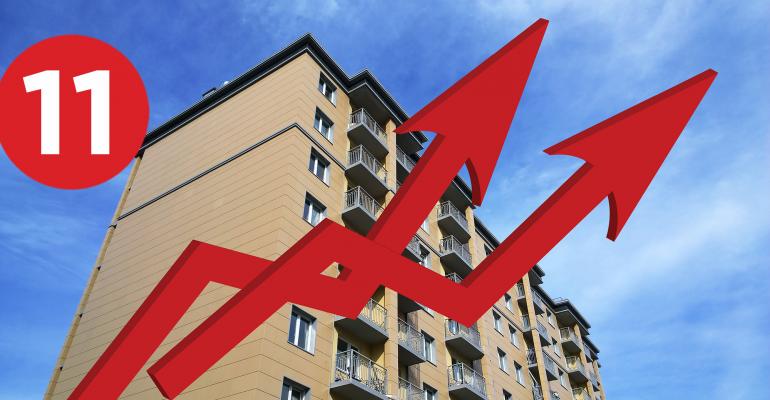- The Housing Shortage Isn’t Just a Coastal Crisis Anymore “San Francisco, Los Angeles, New York and Washington have long failed to build enough housing to keep up with everyone trying to live there. And for nearly as long, other parts of the country have mostly been able to shrug off the housing shortage as a condition particular to big coastal cities. But in the years leading up to the pandemic, that condition advanced around the country: Now Springfield, Mo., didn’t have enough housing. And then Appleton, Wis. And Naples, Fla.” (The New York Times)
- The Magic of Your First Work Friends “Those early-career friendships have become something of an endangered species. For some young people, including those who work in industries like tech and law that have yet to fully return to the office, work life now means taking video calls from bed. They have yet to meet their co-workers in person — let alone form the relationships that feel most consequential at the start of a career. Ms. Degliantoni, for example, felt that her first work friends fell somewhere between pals and fairy godmothers.” (The New York Times)
- June’s Average Multifamily Rent Breaks $1,700 for First Time “It is becoming almost unanimous among apartment rent forecasters that what has been a strong rent growth run across most of the country in the past two years is starting to moderate. To name one example, CoStar just predicted that demand will cool over the next six months, noting that rent growth rose 9.2% in Q2, down from 11.4% in the first quarter.” (GlobeSt.com)
- Average Manhattan Rent Breaks $5,000 for the First Time in History “The average rental price in Manhattan has topped $5,000 for the first time in Big Apple history, according to a jaw-dropping June market report compiled by Douglas Elliman and Miller Samuel. Specifically, the study tallied an average Manhattan rent of $5,058 per month, which alone would set a city tenant back nearly $61,000 a year. That figure marks a 1.7% month-over-month climb from the $4,975 average rent recorded in May, as well as a 29% year-over-year spike from the $3,922 average found in June 2021.” (New York Post)
- Rents Surge at Fastest Pace in More Than 35 Years “Rents keep rising — but how long can that last?” (Bisnow)
- It Wasn’t COVID, But the Distressed Asset Wave Might Now Be Ready to Hit “Higher interest rates are making refinancing loans more challenging.” (Bisnow)
- Coastal Office Landlords Need More Conservative Approaches to Credit “Fitch Ratings says that it’s time for REITs focusing on coastal city offices to spread their attention out to something additional: a more conservative approach to credit. ‘US office REITs that focus on coastal gateway markets, such as New York City, must operate with more conservative credit protection metrics to sustain low investment-grade ratings,’ the firm noted.” (GlobeSt.com)
- Vornado Could Get $1.2B Tax Break as Part of Penn Project “Vornado Realty Trust could secure a tax break worth as much as $1.2 billion if it develops all of the sites surrounding Penn Station. That’s according to a new report by watchdog group Reinvent Albany, which says it commissioned the study to add transparency to the state’s plan to incentivize the construction of 18 million square feet of commercial space near Penn.” (The Real Deal)
- From Gap to Dollar General, Retail Chiefs Exit as Challenges Grow “In the past, retail executives typically reached the top job through two paths: They were either great merchants, with a canny ability to anticipate popular styles and new trends, or skilled operators, with a mastery of the systems necessary to keep stores running smoothly. The shift to online shopping further complicated the job, requiring an understanding of technology and data. And other factors have come into play, including a push for making products in a more sustainable way. With the onset of the Covid-19 pandemic, retailers are dealing with fresh complications from supply-chain bottlenecks and historic levels of inflation to staffing issues and an increase in crime at retail stores.” (The Wall Street Journal)
- Average Prime Day Orders Up 18% Since Last Year “As Prime Day approaches its final hours, a clearer picture of its performance emerges. The average Prime Day order so far this year is $53.06, up 18% from $45.05 during Prime Day 2021, according to 2022 Live Prime Day Tracker data released Wednesday afternoon from Numerator, Close to six in 10 (57%) of households shopping Prime Day have already placed two or more separate orders, bringing the average household spend to roughly $130.06, with average price per item of $33.94.” (Chain Store Age)
- California Went Big on Rooftop Solar. It Created an Environmental Danger in the Process. “California, a national leader in the solar market, has no plan for safely recycling more than 1 million photovoltaic panels that will soon need to be discarded.” (Los Angeles Times)
0 comments
Hide comments





